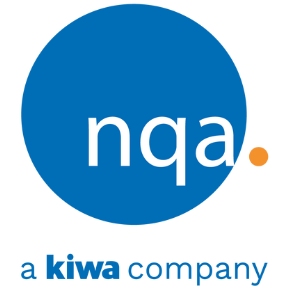Hidden Benefits of ISO Certification
Why does ISO qualify for tax benefits?
Significant cash refunds and future tax savings may be available for businesses that hold an ISO certification.
Through two recent tax code revisions, Congress and the IRS have altered regulations to help combat outsourcing and drive innovation in US manufacturing and other choice industries. Congress has recognized that now more than ever continuous improvement is required to survive in a global economy. Therefore, Congress have expanded incentives that are designed to reward companies focused on innovation, improvement, and cost reduction without sacrificing quality.
Historically, only large companies were able to monetize and benefit from these incentives. However, these incentives are now much easier to utilize with the purpose of driving benefits down to smaller organizations.
One of the major qualifications of these new tax incentives is process improvements. There is a natural link that exists between the IRS definition of process improvements and the implementation of continuous improvement activities, like ISO 9001:2015 for example.
R&D Tax Credit and ISO
The key incentive worth exploring is the Credit for Increasing Research Activities (aka the “R&D Credit”). The R&D Credit is calculated based off of Qualified Research Activities (QRAs). QRAs may include everyday business activities like engineering, process improvements, custom manufacturing, product improvements, design work and most activities that occur during the planning phase of any project.
QRAs are determined using a 4 part test:
- Business Component Test - Identify whether a business component is being developed or improved.
- Elimination of Technical Uncertainty - Technical uncertainty must exist, and efforts to eliminate those uncertainties must be conducted.
- Process of Experimentation - Evaluate one or more alternatives to achieve a result.
- Use of Scientific Principles - Experimentation must rely on hard sciences, like physical, biological, engineering or computer sciences.
One common misconception when identifying QRAs is that the “Research” component does not apply to ordinary business activities. However, “Research” as defined by the IRS, is more expansive and includes many day-to-day activities of companies in the manufacturing, construction, engineering, software and tech industries. The activity does not need to be revolutionary to your industry, but merely has to be evolutionary to your business. ISO 9001:2015 is a great example of this.
How to calculate your tax benefits
Your QRAs will have expenses tied to them, most commonly, the wages of the employees performing those activities. Those wages, along with supplies and subcontracted expenses, would be your Qualified Research Expenses (QREs), and would form the basis of your tax benefit calculation.
ISO Certifications are classified as a process improvement, which would be a QRA. When determining the value of your tax benefit, there are many considerations. Remember, the primary driver of the credit is the wages of your employees involved in the activity. For ISO Certifications, we typically see supervisors and managers spearheading the project, dealing with ISO audits and ensuring that processes are being improved and followed. Depending on how much time a specific employee dedicates to these activities, a certain portion of their wages will be determined as Qualified Research Expenses for the purpose of the credit.
These calculations are most often outside of the normal duties of a CPA firm. There are many third-party providers of R&D tax credits out there. Do your homework in order to find the firm that best suits your needs. The firm should work in conjunction with your CPA to complete the work, bill a fixed fee, support their work under examination and conduct several site visits.
Whether you are considering an ISO certification or have recently completed yours, there is still time to take advantage of the tax benefits. One of the major concerns most business owners have when considering this credit is documentation: "How do I account for my employees’ time that was specifically devoted to a certain Qualified Research Activity?". There are a number of streamlined ways you can apply time to R&D activities.
An experienced R&D provider will work with your company to determine the best documentation and methodology. During the R&D Study process, the provider will conduct an analysis of your business activities and document the rationale as to why you qualify. This is important if the credit claim is ever questioned.
Timeline for capitalizing on tax benefits
There is no time like the present! First of all, it is important to understand that R&D credits do not just apply to ISO certifications. It is worth taking a look at your business as a whole in order to determine what may and may not qualify under this credit.
Not only can you take this credit for the upcoming year, but you can also recapture credits for up to three years prior. You may be able to offset prior payments which could result in a significant refund. It is not uncommon for manufacturing companies to receive a year one tax benefit of $100,000 - $200,000.
To make sure you do not miss out on prior credits, you should have an assessment by an R&D Credit provider as soon as possible.
Furthermore, if you are still considering your ISO transition, there are other benefits available to help fund that transition, state workforce training funds for example.
Author: Kevin P. McMillan, J.E. Cunningham & Associates, LLC
